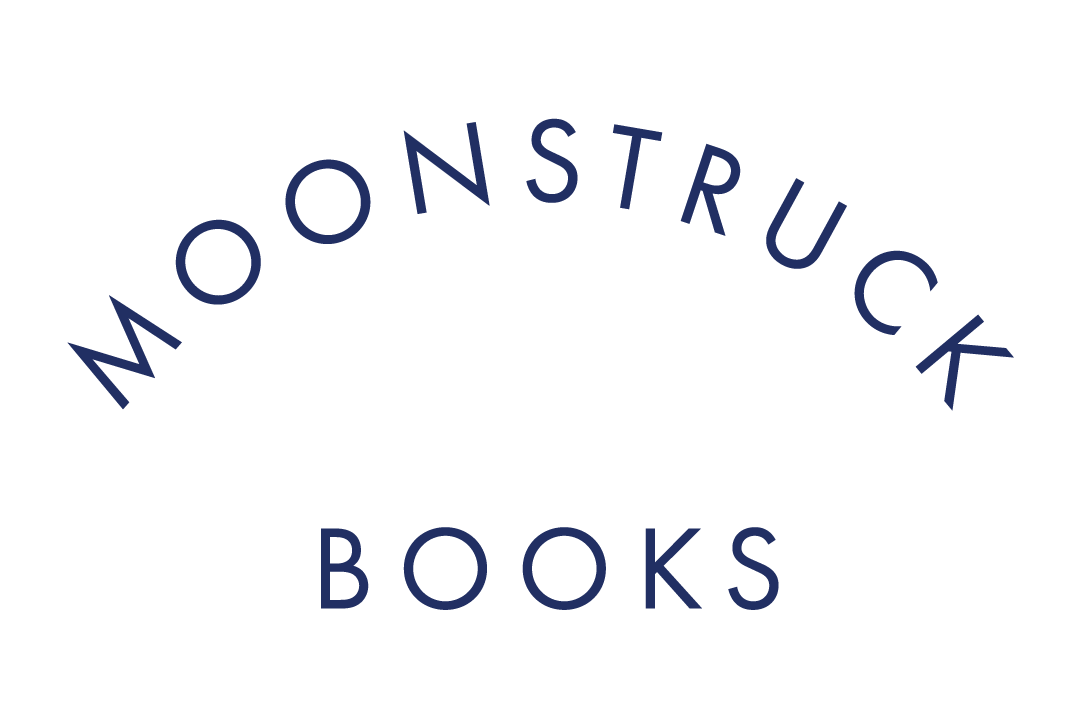5 steps to collaboration
Non-toxic relationships are possible (outside the lab).
With a strong focus on community (building it, nurturing it, sustaining it), Moonstruck Books approaches publishing as a creative, collaborative process. We seek to connect with writers whose values align with our own; ideally, a finished book reflects both the publisher’s and the author’s vision for the work. This post discusses how Moonstruck Books selects the manuscripts we want to publish and describes the 5 steps from review to collaboration.
1. Discovery
First, we have to find each other. While many people find Moonstruck Books through our open submissions call, we are also listed on Duotrope, Submission Grinder, and in plenty of round-up lists. We’re active-ish on a few social media platforms, including Instagram and Bluesky. In the interest of transparency, our submission guidelines offer information about how to submit your work: by email, as a PDF, with a personal note. We don’t charge submission or reading fees. We pay professional rates of 10¢/word for short fiction. We don’t ask authors to foot the bill for any part of the publishing process, including marketing or editing.
You’ll notice we encourage non-traditional writers to send their work. There’s a longer explanation of what “non-traditional” means to us in the guidelines. You’ll also find all sorts of editor’s notes, posts, and opinions in this section of the site.
2. Assessment
This stage of the acquisition process takes longest, for us. We read every submission and respond to each one. Sometimes this is a form rejection, which is a regrettable reality with larger queues. Sometimes, the rejection includes a quick note about the strong points of your story, or a little editorial encouragement. The submission process is grueling and deflating for writers, and we try to lessen the sting of rejection by being prompt, pleasant, and professional.
Our current response time for short fiction is less than 2 weeks. For novels, short story collections, novellas, and other manuscripts, we need a few months to read and respond. We allot sufficient time in the selection and review process to give everyone’s submission a fair shake. Rejections are never personal, and never a reflection of the quality of the submission; they are a matter of timing and taste.
3. Communication
If we find a manuscript that feels like a fit, we’ll reach out. Usually, this is an email to make contact, see if the submission is still available, and discuss what’s possible moving forward. This might include questions like:
Are you comfortable making developmental edits? Line edits?
Does our publishing timeline work for your schedule and availability?
How do you feel about [X, Y, Z] formatting choice?
What’s your preferred method of talking through disagreements or challenges, should we hit a snag?
These questions help us get a sense of whether or how to move forward. Even “finished” manuscripts need to be sculpted. We prefer to work with authors who are open to making revisions, sometimes significant revisions; we don’t just run spell check and call it good. Editing is a complex process with its own conventions and techniques. If you want to get a sense of what professional editing is and how it can transform a manuscript into a book, check out The Trees For The Forest by Betsy Lerner.
Sometimes, folks prefer to talk through these questions on the phone. We find those conversations highly generative—it’s great to bounce ideas off one another, talk about the story, and come to a consensus about next steps. Other folks prefer to see editorial suggestions first, and that’s fine too. At the communication stage, the writer and editor are learning whether we mesh with one another and deciding how we can best work together. We understand that our editorial process isn’t for everyone, and that our goals for a manuscript might not be what the writer has envisioned. We see these conversations as a way to explore what’s possible, prior to making a contractual commitment.
4. Contract
After we’ve taken some time to ascertain whether we want to move forward, the team discusses our next steps and what we can offer. What’s most important is that we feel we are aligned: that is, the editor and writer communicate well, understand one another’s goals for the manuscript, and can confidently move forward with the editorial process. In the next step toward acquisition, you’ll get a contract. The terms are usually up for discussion, within reason—if you want something specific, ask. We always recommend taking any contract to a lawyer. The Authors Guild offers legal services to writers: “We’ll review your domestic publishing contracts line-by-line, recommend specific changes, additions, and deletions, and give you negotiation tips to help you secure the best deal possible.” We send our contracts via DocHub, which is secure and helps us stay organized. Once both the writer and publisher sign, the contract is finalized, and the fun can start.
5. Collaboration
An acceptance email from Moonstruck Books means we love your work. All of us. The whole team. Period. When we accept a story, it’s because we have found an author whose career we are excited to support, who we believe is innovating within the genre, and whose writing we want all our friends to love, too. Everyone on our team reads widely—omnivorously. We share recommendations with each other, read and write reviews, and think critically about fiction. We love horror and science fiction and their various gory-glittery subgenres. We don’t say “yes” often, but when we do, it represents a full investment in the work you’re doing.
Moonstruck Books’ team understands that entrusting a publisher with your manuscript is the biggest step an author can take. It is an immense gesture of faith—one we honor and do our best to return. Collaboration means we are down to share our resources and time with you, and work together to create a book that we’re all proud to have our names on.

